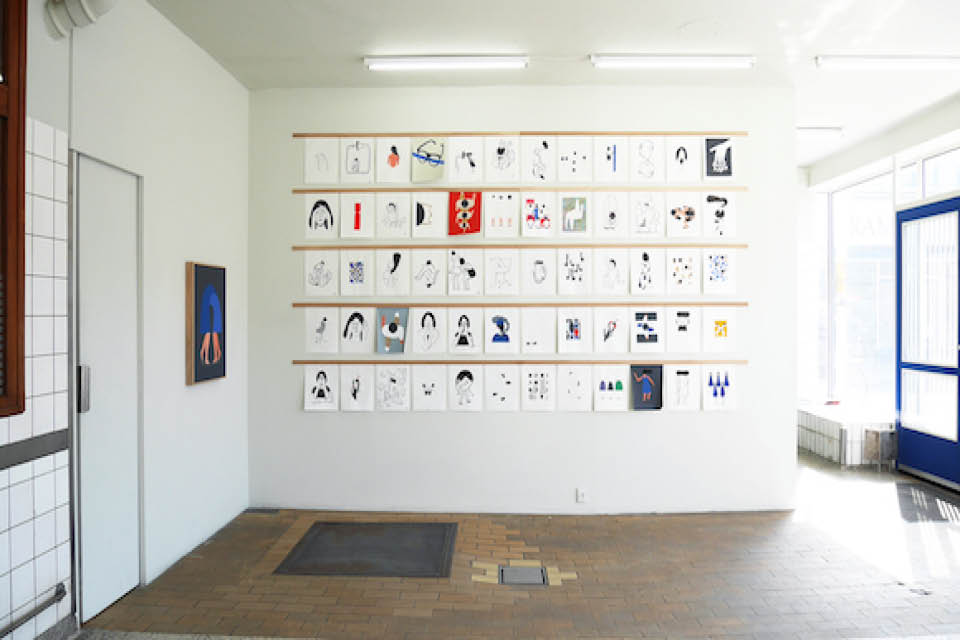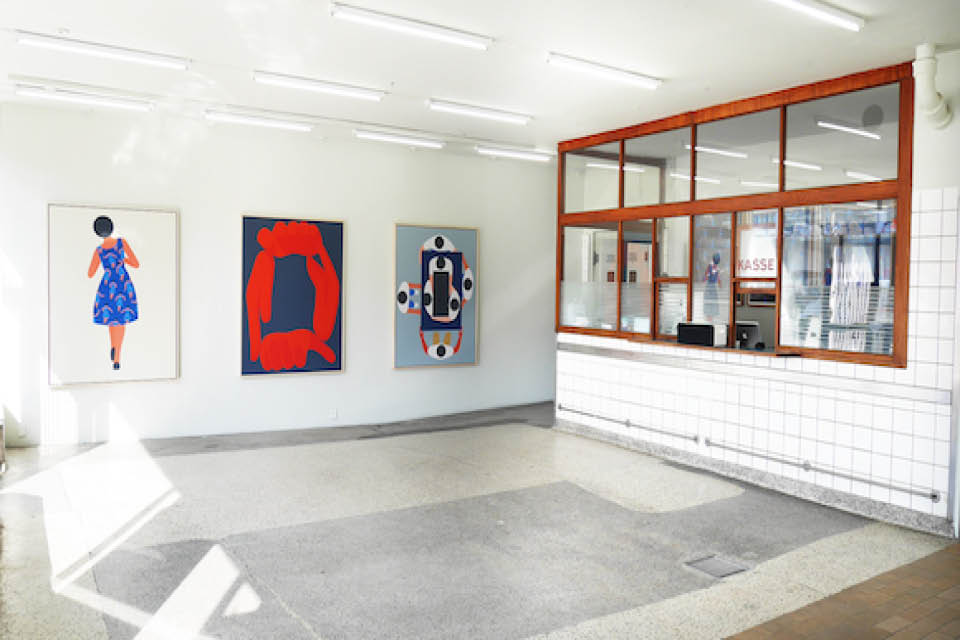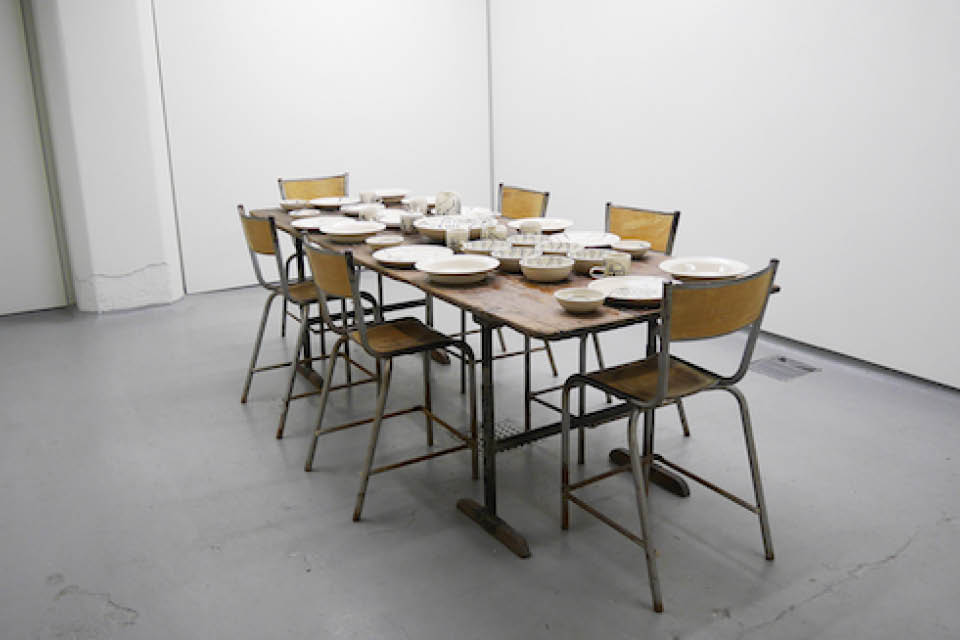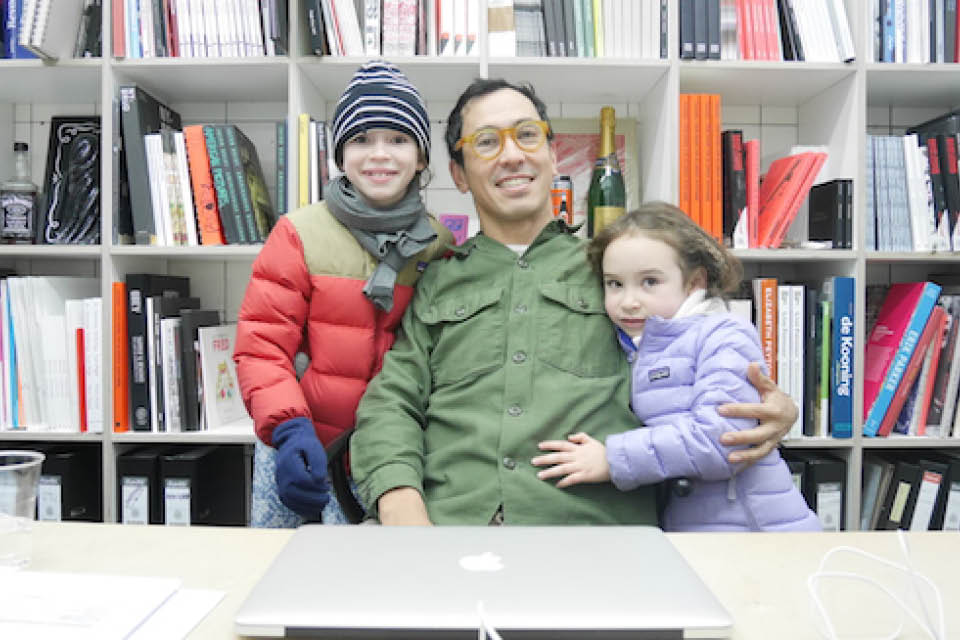Interview With Geoff Mcfetridge22.03.2015
Geoff McFetridge is a graphic artist and artist based out of Los Angeles, USA.
We tasked our creative director Mikkel Grønnebæk with interviewing the man responsible for some of the most iconic graphic designs of the last decades.
Apart from being a sought-after graphic designer working for companies like Nike, New York Times, MTV, Pepsi and Intel, Geoff McFetridge is also the man behind the doodle-ridden titles for the Hollywood feature films, The Virgin Suicides by Sofia Coppola and Where The Wild Things Are by Spike Jonze. On top of that he’s moved into fine art with solo shows at galleries in Los Angeles, New York, Berlin, Paris, London, Seattle, Milan and the Netherlands.
But, the most important thing: We really like his elegant, reductive style.

All right Geoff, can you tell us how you started out?
My first work came out of my interest in skateboarding, and I was one of the very first people to put art on a snowboard as snowboarding was invented in the late 80’s when I started working as an artist. I put myself through grad school doing snowboard graphics. I have run my own studio since 1996 in Atwater Village, a small neighborhood in LA where I first came to work for the Beastie Boys by directing the art their magazine Grand Royal. My first shows were in Los Angeles at Georges Gallery, where I began to show very graphic work based on my drawings and writing. I was always interested in the techniques and process of commercial art. I wanted to bring what i loved about graphics into a gallery. In graphics I saw a potential to make work that had never been done before; I wanted to make the “mechanical” or “press ready” artwork poetic.
You come from a more commercial background as an illustrator and now you seem to focus more on fine art. Did that come naturally to you and do you still combine the two worlds today?
I have always liked to go back and forth. It has been a big part of my practice to consciously make a mess of things and blur the practices together… but as I get a bit older, I sense a change in that thinking. Things are always changing, but with artwork I often feel like I am helpless to where the work takes me. That I am being led around by the creative process. So in that way very small things about how I am working can make a large impact on the way I live my life and I have to adapt.
Through years of doing installation work I found myself painting, painting on panels and walls. Then the paintings moved off the walls and really began to occupy my time. The work felt like it was finally being direct about things (I hesitate to say “ideas” here) that have been part of my work for many years.
The paintings are graphic in a way that my work has always been but they are also different, more specific. For me that specificity is the thing, it is not what I am being specific about as much as it is the act of being specific. In the past I feel that my work was about finding connections through visual language. Playing with familiarity, universality, preying on the literacy of my audience. Where as the paintings are their own fully formed world, a language of their own
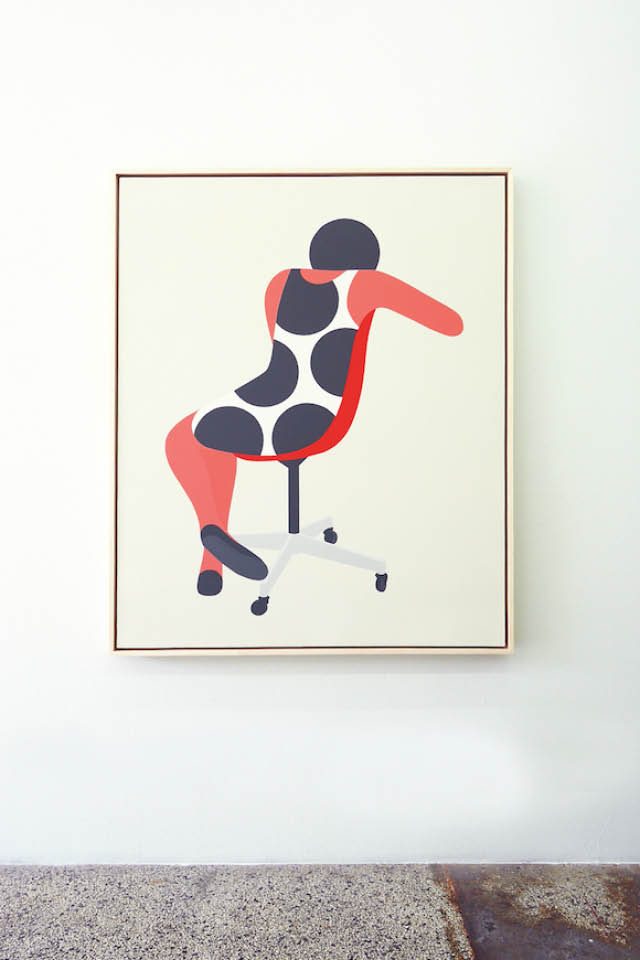
You work in various medias from paintings to ink drawings, prints, animations, pottery, sculptures and graphic designs. Are there any specific parts you enjoy more or how do you work between the different medias?
The fine art work has already led the commercial work, but it is interesting to let the fine art work separate itself at this time. Lately the work I have been doing commercially is more rough, and based on drawing, where the paintings are super refined and mechanical. In some ways it is the opposite of what you would expect.
So much of my work is about looking inward, and it comes out of a very traditional creative process. A design process actually. So something that I have learned is that it is good to have a variable outside of the process; like a new material (pottery) or a new sense (sound in animation) or technical challenges (animation). My drawings are all done on animation paper, and my drawing is informed by doing drawn animation. My paintings come from techniques learned both from working on billboards and installations but also use animation paint. I do ink drawings that come from painting on pottery, everything I work on finds its way into different aspects of what I do.
You have worked with various musicians and film directors in the past such as Whitest Boy Alive, Phoenix, Spike Jonze etc.
How did that come about – and how does music and film affect you through your work as an artist?
All of the people you mention there are people whom I have worked with and who approach creativity in a way that is very familiar to me. I am interested in how other creative people approach their work. Music and film are incredibly difficult to do well so to be involved with people really doing it, making great work, is inspiring. Who I work with has a lot to do with a lack of patience really – successful musicians and filmmakers are decisive. I like to be in decisive environments, I like to be in places where concepts are the most vital thing. With music and film ideas are being made tangible… real!
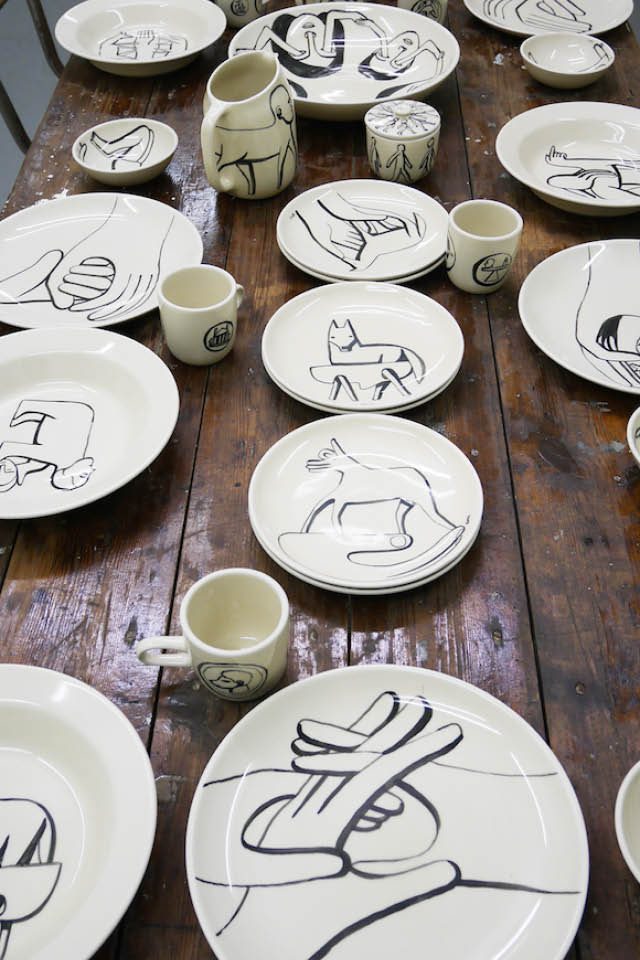
You have a very graphic style with clever points or scenes taken from the daily life: what inspires you as an artist?
I think there is a quote from Robert Rauschenberg about not making art that is a (feeble) representation of your life, but make art that is an extension of your life. I don’t know that I can say I do that myself, but I agree with him.
I am interested in finding a balance between the varying aspects of my life. I am drawn to really mindless things, these very un-artful experiences. I have a family and we travel a lot. I also like solitary things. I love surfing, cycling, trail running, skiing. So if my work is about looking inward, maybe the things I do, like running, are about sweeping out the hallways, cleaning the clock.
Maybe those things help me see the world that shows up in my work. Not all of the things I paint that might seem like they really happened did happen though. But the paintings are not about truthfulness. I paint some things because I saw them but more importantly, I believe they are things that the viewer has seen. I am painting from life, but not life purely found in the landscape, but the also psychological, mediated and transcendental world that infects our consciousness.
Having seen your studio and house you seem to care a lot for design. What is good design to you?
It is like I said earlier, I like design that looks like a decision, not a version – I have an aversion to versions! I feel that good design has a singular aspect that is clear. Like a Bertoia chair, I have seen many versions, and the versions or refinements do not matter. The first one he made “a chair made out of a grid of wire” and it was perfect. Its flaws or potential refinements were inconsequential.
Lately you have been exhibiting in Japan, Copenhagen, London, Canada etc. Name 5 things you can’t live without when travelling?
Well, 5 things that are unique to me possibly?
– a Lamy Fountain Pen that always explodes at many points in the journey, but it is so nice to draw or write with.
– Tape. I carry a pretty stocked art kit whenever I travel and I always end up needing tape for something.
– 8” x 10” paper Moleskin blank sketchbooks. They are nice because you can get them everywhere, if you fill one up. And, they are flexible and light and the paper is awesome.
– Running shoes. For running only.
– Patagonia nano-puff jacket. It works as a pillow/rain jacket/ blanket and balls up into the size of your fist.
As a kid what did you want to become when you grew up?
An architect.
And how did you end up doing what you do now?
I found out that although architects get to draw all day, they do not get to draw whatever they want.
Geoff is currently exhibiting his work here in Copenhagen at the V1 Gallery.


